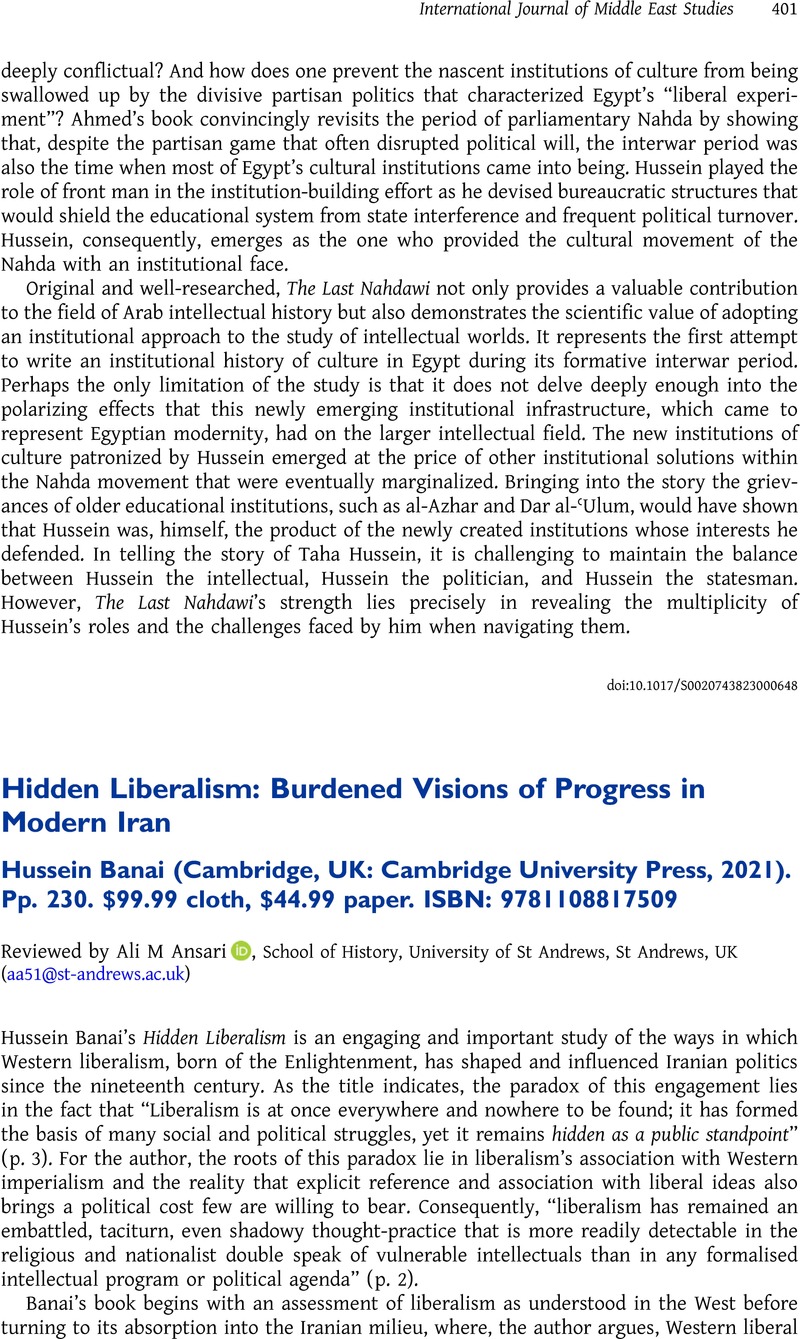No CrossRef data available.
Article contents
Hidden Liberalism: Burdened Visions of Progress in Modern Iran Hussein Banai (Cambridge, UK: Cambridge University Press, 2021). Pp. 230. $99.99 cloth, $44.99 paper. ISBN: 9781108817509
Review products
Hidden Liberalism: Burdened Visions of Progress in Modern Iran Hussein Banai (Cambridge, UK: Cambridge University Press, 2021). Pp. 230. $99.99 cloth, $44.99 paper. ISBN: 9781108817509
Published online by Cambridge University Press: 12 May 2023
Abstract
An abstract is not available for this content so a preview has been provided. Please use the Get access link above for information on how to access this content.

- Type
- Book Review
- Information
- Copyright
- Copyright © The Author(s), 2023. Published by Cambridge University Press



